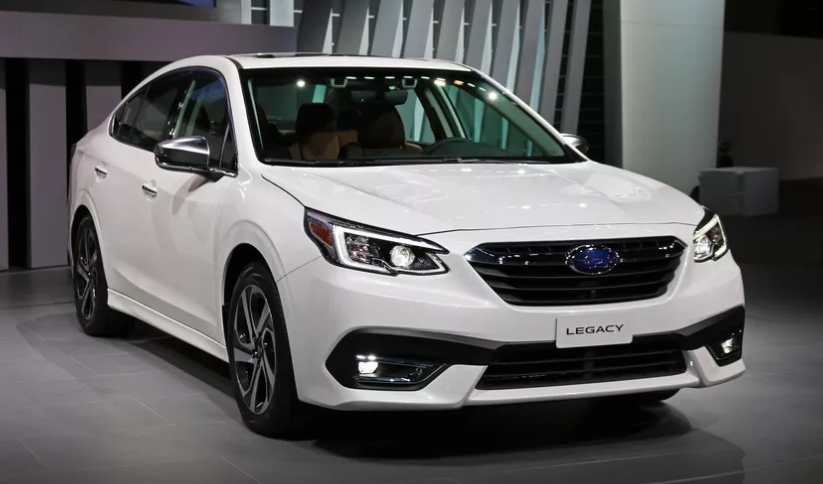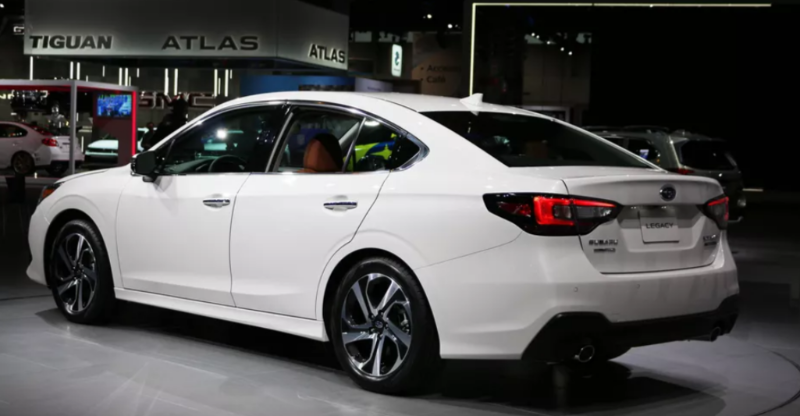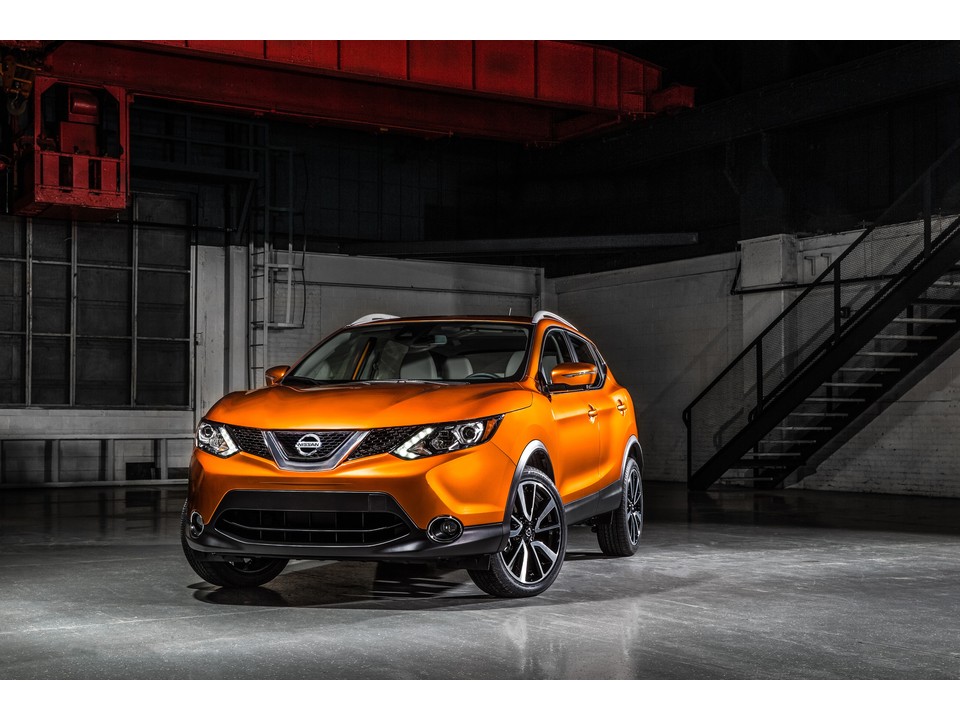Subaru is a brand best known for its off-road crossovers and delicious performance sedans. But buried in this famous lineup is a modest four-door sedan, the Legacy, struggling to get the same amount of attention, all while giving the thankless job of slugging it out with the likes of the Honda Accord and Toyota Camry. But the 2020 Subaru Legacy, a good redesign, is ready to create a larger effect.
Looking to improve Legacy’s attraction, Subaru produced some intelligent changes to the vehicle while maintaining its stand-alone, conventional all-wheel-drive system.
Pros & Cons
- Standard all-wheel drive for excellent wet-weather traction
- Good outward visibility
- Standard active driver-assist features
- Turbocharged engine provides robust power
- CVT automatic can sometimes feel unrefined
What’s new
- Redesigned and more refined for 2020
- Bigger touchscreen
- New turbocharged engine option
- Start of the seventh Legacy generation

In today’s automotive landscape, the development of shared platforms between cars has become almost compulsory for automakers. In this situation, the Subaru Global Platform underpins the bulk of the brand’s line-up, including 2020 Legacy, Outback, Ascent, and Forester. Sharing a lot of its components makes it simpler for the Legacy vehicle to stay on the Subaru menu, despite selling fewer units than its nearest sibling, the Outback.
Beyond maintaining manufacturing expenses down, shifting the Legacy to the Subaru Global Platform makes it safer and quieter. Relative to the previous Legacy, the 2020 model utilizes 13 percent more high-strength steel in its lighter and stiffer frame. Although the structure is remarkable, the Legacy’s new look is not nearly as noteworthy.
Compared to the earlier generation, the 2020 Legacy has a very subtle nipple and tuck design. The headlights and taillights are more sculpted, with slight tweaks to the grid and a reduced character line as well. Although there is no revolution in any sense, the structure is indeed distinct from the earlier model, but it lacks some of the flare observed in some of the other rival segments.
Impressive Insides 2020 Subaru Legacy
While the subtle nature of the Legacy leaves something to be desired, its interior is a much better place to concentrate your attention. Large segments of soft-touch fabric cover the dash and door panels, while tiny pieces of painted trim fill the gaps. Hard plastics are few and far between, and every major touchpoint is lined with something beautiful. If I have a grip, the cloth covering the inside of the seats and the door panels feels like it was cut out of a wet suit. But hey, this is Subaru.
Space is abundant for all travelers, with a front row of 39.4 inches of headroom and a back row of 37.2 inches. These numbers are in line with class rivals, although the Legacy’s non-sloping roofline really makes the back seat look more comfortable. The Legacy has an amazing legroom, 42.8 inches on the front and 39.5 inches on the back.
The Legacy’s 11.6-inch display has been in development longer than the 2020 Legacy itself.
The front and middle of the panel are controlled by an 11.6-inch vertical touchscreen infotainment scheme (normal on all but the base model). During the launch of the car, Subaru Product Planner stated that the Infotainment Unit had been in growth for six years, one year longer than the 2020 Legacy itself.
Long development time has paid off, as the big screen has a shallow learning curve and is simple to communicate with. During the brief test period, the screen responds rapidly to inputs and is nearly lag-free. The vertical screen, which follows the trend observed in Teslas, Rams, Volvos, and others, is so big that Apple Carplay and Android Auto (both of which come standard) use only about half of the accessible real estate. This leaves the bottom half for other appropriate data, such as media and car environments.
The other party piece of Legacy is the brand’s EyeSight safety suite. Subaru also expects Legacy to obtain the Top Safety Pick+ designation from the Highway Safety Insurance Institute when the accident is being tested later this year. Autonomous emergency braking, adaptive cruise control, and Lane-Keep-Assist come standard on every Legacy, while blind-spot monitoring, rear cross-traffic alert, proximity important start button and LED fog lights are accessible as part of a $1,000 bundle. Offering as much safety technology as normal equipment and keeping the remainder available shows that Subaru understands its audience.

Don’t Go For Turbo
Replacing the six-cylinder as an optional Legacy engine is a 2.4-liter turbocharged four-cylinder engine that delivers a good 260-horsepower and 277-pound torque. The standard fare in the Legacy is a naturally aspirated 2.5-liter four-cylinder containing a less attractive 182 hp and 176 lb-ft of torque.
Both motors are paired with a continually variable transmission (CVT) that transmits energy to each corner via the conventional all-wheel-drive scheme. The turbo system, however, is equipped with a modified high-torque CVT to manage the added twist.
Cruising through the wonderfully winding roads of Ojai, California, just south of Los Angeles, I get plenty of moment to experience both motors while driving the Legacy through long sweeping turns and miles of tighter canyon backroads.
The Legacy’s suspension setup is unmistakably soft and forgiving.
My first epiphany behind the wheel of a base engine-equipped vehicle is the Legacy’s refreshingly well-damped suspension. The tuning is unmistakably smooth and forgiving, and it’s a configuration that I prefer the firmer journey of Accord and Camry. In addition, Subaru provides the largest wheel choice in the 18-inch range.
They trade an aggressive design for outstanding ride quality. Likewise mild is the Legacy’s steering, which lacks responsiveness, but is light and simple to regulate around the bends.
Switching to the higher-spec turbocharged Limited XT model gives an unexpected grin to my face–the additional energy and torque make the XT much faster than the non-turbo models. That said, the rest of the car components–including the tweaked high-torque CVT–just don’t match the more progressive profile of the engine.
The suspension, steering rack, wheels, and tires are the same regardless of the engine selection, and the configuration is better suited to the 2.5-liter engine. Unless the horsepower is at the top of your wish list, save the $4,450 and opt for the standard powertrain.
A family member once advised me to always order the second cheapest bottle of wine from the menu to get the highest price. Funny enough, the Legacy has the same logic. The base vehicle begins at $22,745, but this is the only trim that utilizes a narrower 7.0-inch infotainment screen.
One bump to the $24,995 Legacy Premium adds a bigger 11,6-inch system, dual-zone climate control, heated front seats, leather-wrapped steering wheel, and a 10-way energy driver’s seat. At this cost, the Legacy is the most appealing.
Those who want additional energy can opt for the $34,195 Limited XT trim, which contains a turbocharged engine, 18-inch wheels, push-button start, blind-spot tracking, rear cross-traffic alert, in-dash navigation system, a heated steering wheel, and a driver awareness surveillance system (which analyzes the driver and alerts when fatigue is detected).
The top-tier $35,895 Touring XT trim requires everything from the Limited and adds a front-view camera and Nappa leather to the inside.
Subaru’s time-consuming upgrades to the Legacy exterior design and significant improvements to its cabin and accessible technology, in addition to its conventional all-wheel drive, are sufficient to make it a worthy class choice. While rivals like Toyota Camry and Honda Accord stay great choices on their own, the fresh Legacy’s subtle charm might be enough to steal from you.
2020 Subaru Legacy Limited
| ENGINE | 2.5-Liter I4 |
| OUTPUT | 182 Horsepower/ 176 Pound-Feet |
| TRANSMISSION | Continuously Variable Transmission |
| DRIVE TYPE | All-Wheel Drive |
| FUEL ECONOMY | 27 City/ 35 Highway/ 30 Combined |
| WEIGHT | 3,581 Pounds |
| SEATING CAPACITY | 5 |
| CARGO VOLUME | 15.1 Cubic Feet |
| BASE PRICE | $22,745 |
| AS-TESTED PRICE | $29,745 |
2020 Subaru Legacy Pictures





